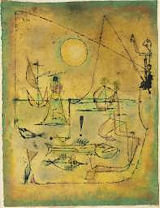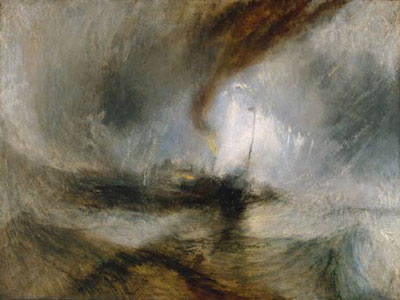




________________________
Although Seinfeld can be viewed in any order with complete enjoyment daily from first episode to 180th, the same is not necessarily true of the 78 voyages of Star Trek (79 if we count the two-part 'The Menagerie' as separate episodes).
The problems are not in any way due to Star Trek as the marvellous television it was in 1966 to 1968 — and is today — but with the science fiction genre to which it belongs. When choices for a story line are bounded by the ordinary, as in Seinfeld, the possibilities are endless. When everything is possible, as in science fiction (and Fairy Tale), possibilities, ironically, become extremely restricted.
For example, network Episodes 2 and 3, 'Charlie X' and 'Where No Man Has Gone Before' each contain characters with superhuman powers shown through eyes that shine with an unearthly glow. Episodes 5 and 7, 'The Enemy Within' and 'What Are Little Girls Made Of?' each show Captain Kirk split into two people, which must have seemed excessive even as originally shown over three weeks, let alone today when they are separated by a day.
And Star Trek creators get into the act with their Episodes 9 and 10 both showing Captain Kirk strapped onto a gurney while terrible things are done to him. (It must be pointed out that Shakespeare also resorted to repetition, particularly in his comedies, when the plays became so dense with ideas and characters, dialogue and poetry that he had no time to dream up new ways of proceeding from beginning, to middle, to end.) I'm willing to credit Star Trek creators with similar restraints on imagination.
Perhaps all this carping and criticizing only means that Star Trek's first ten Episodes are best enjoyed in production order envisaged by the series creators and shown in previous page Season 1A , as well as in its original once-a-week viewing format. (Shakespeare, too, will always benefit from a week's contemplation of one play before embarking on the next.)
And once we forget to be annoyed by plot repetition, we can pay more attention to the science in Star Trek's science fiction.
It seems to me that the reason Star Trek shows so many early tentative versions of today's technological commonplaces: computer monitors, for example, floppy discs, cellphones, DVDs, pagers, recorders, voice-activated computers and the like, is that once a technical marvel has been visualized, all that remains is to make it small enough, and cheap enough to be viable. This is why the spectacle of Star Trek characters lurching about whenever The Enterprise hits turbulence arouses incredulity that amidst all this up-to-date technology, no one has yet invented the seatbelt. (See Acknowledgements for my thoughts on onionskin carbon copies in Philip K. Dick's 1968 novel Do Androids Dream of Electric Sheep on which the film Blade Runner is loosely based. N.B. Loosely in that they kept the extreme violence, but ignored the humour that made violence bearable.)
Most of us would have problems visualizing the world in twenty years, let alone in two hundred. Forty years on, Star Trek's creators seem to have made inspired guesses about almost every aspect of modern life, not excluding our current tendency to political correctness.
They even had to imagine the sort of characters who would inhabit such an 'improved' world. No wonder they repeated themselves on occasion.
But who can deny that amidst the occasional repetition wonderful original stories were being dreamed up. That it was copied a couple of weeks later in no way lessens the impact of 'The Enemy Within', with its battle possibly to the death between a James T. Kirk who contains all the Captain's good qualities. And another Kirk containing all the bad. And the inescapable conclusion that a Starship Captain needs both good and bad in order to function. Indeed, in order to survive.
* * * * *
At this point in the produced series, following 'The Enemy Within' as Episode 4, it appears to me that if we were ever going to be in a position to appreciate 'The Man Trap' it would be now, as Episode 5.
I still believe that Star Trek is most effective when dealing with earthly problems and human concerns disguised as alien encounters on faraway planets. And 'The Man Trap' has its share of modern problems such as the depletion of a planet's resources (salt, in the case of planet M-113), resulting in the extinction of all but one of its original inhabitants.
But even here on earth we haven't yet been successful in driving out all mystery and spirituality by reducing each and every aspect of our humanity to quantifiable electromagnetic impulses. And there are things happening in 'The Man Trap' that defy earthly description.
Things that we feel rather than understand.
Three men from The Enterprise are shown beaming down to a planet containing the ruins of an ancient and long-dead civilization: Kirk, Dr. McCoy, and crewman Darnell. Each of the three is shown meeting the supposed Nancy Crater, wife of Professor Robert Crater. Each sees a different woman: Kirk the 'real' Nancy Crater, McCoy the adored Nancy from ten years earlier, and Darnell a young blonde recalled as having been seen on Rigley's Pleasure Planet the last time I was there. Something intriguing is going on ...
Nancy and her husband both seem to display an inordinate amount of interest in the re-stocking of their salt supplies. When Nancy is discovered standing over the body of Darnell we have no difficulty in suspecting the reason for the strange marks found on his face. Later we see the body of Green, another crewman, and watch horrified as 'Nancy' becomes crewman Green, and in that form accompanies Kirk and McCoy back to The Enterprise.
When Green's body is found on the planet, and the false Green is being sought throughout the ship, this formidable creature is shown to have the power to read a human mind and assume the form of a person being thought of or imagined by a potential victim (in this case an ideal black crewmember as imagined by a transfixed Uhura). And so we begin to understand why 'Nancy' could be seen in three different forms by three different people.
The creature leading you a merry chase, Mr. Sulu? Perhaps I can help. Fill me in. We know that the person speaking is actually the salt-seeking creature in McCoy's body. It's McCoy, and yet not McCoy, just as Green was not quite Green. There's a dreamy quality to the impostures, recognized in retrospect as the result of the creature reaching into the minds of its companions.
* * * * *
Because we remember only the dreadful ending, we are surprised each time we see this Episode by the force of the scenes that take place during the inquiry in the briefing room, with the creature in the form of McCoy seated between Kirk and Crater.
We watch the reactions of the false McCoy as Crater admits that he can recognize the creature no matter what form it has assumed. It needs love and companionship as much as it needs salt, he adds, and Kirk reminds us that the creature has assumed the form of Nancy for much of Crater's time on the desolate planet. Crater and 'McCoy' plead that the creature be given the salt it craves and left alone to return to its planet as the last of her — its — kind.
We see the actual form of the creature for only the briefest moment at the end, as it is balked in its attempt to kill its final victim, but that image stays with us to haunt the mind forever.
Each time we watch 'The Man Trap' we are amazed at the denseness of the Episode, by how much there is to see and digest and remark upon — because all we have retained from one viewing to the next is that heart-stopping moment when we see the creature as it is.
The creators of Star Trek wisely chose to break somewhat the intensity of 'The Man Trap', their Episode 5, by following up with 'The Naked Time', and its endearingly funny depiction of infected crew member Lieutenant Kevin Riley shutting down engineering in order to broadcast a horrible rendition of I'll Take You Home Again Kathleen. Interestingly, no one contemplates dealing with Riley's mutinous assumption of command in any manner more lethal than Mr. Spock's benign (and temporary) Vulcan nerve pinch.
'The Naked Time' has its funny moments, but is in fact horrifyingly modern in addressing two universal human fears: of inadvertently bringing back contamination from outer space, and the passing on of deadly infectious diseases by casual contact.
By now we are acquainted well enough with the ship's diverse personalities to appreciate when they are acting in an uncharacteristic manner. The disconcerting pleasure of watching Mr. Spock respond to a second slap by his Captain with a right cross of his own, knocking Kirk backward over a table, is delightful indeed now that we are aware of the improbability of such an encounter between these particular combatants.
________________________
And after the endearing silliness of 'The Naked Time', why not 'Charlie X' as Episode 7? Certainly I don't remember feeling the slightest hostility to 'Charlie X' after 'The Naked Time' and before the thrilling intergalactic battle of 'Balance of Terror'. Already seven weeks have passed since the eerily glowing eyes of Gary Mitchell caused such consternation in Episode 1 'Where No Man Has Gone Before', and we are prepared to be indulgent with a similar manifestation in an Episode so far removed in programming time.
'Balance of Terror', with its showdown between The Enterprise and the Romulan warbird is new, exhilarating, and sadly plausible as it shows the consequences of an age-old obsession with evermore powerful weapons of warfare.
And the common physical characteristics shared by Vulcans and Romulans, together with knowledge of how their once shared heritage was divided in eons past, is ... well ... fascinating, as Mr. Spock would put it.
________________________